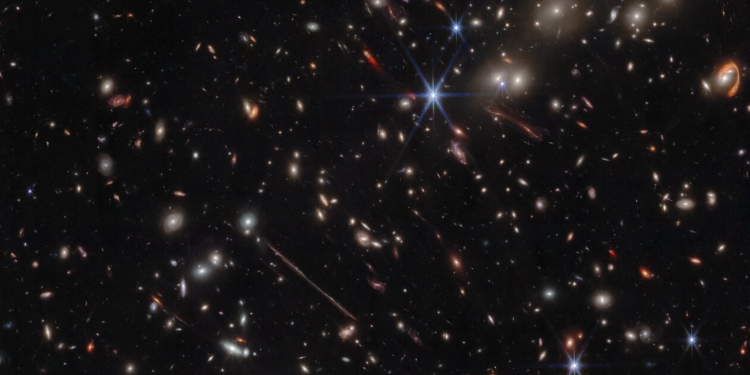The James Webb Space Telescope (JWST) has unveiled a new cosmic mystery: a collection of compact, extremely red galaxies, dubbed the Little Red Dots. But despite their small size, these galaxies are puzzling astronomers in ways no one expected. Are they galaxies crammed with stars? Or do they harbor gigantic black holes at their core? The truth remains elusive, but new data from the Webb telescope is raising more questions than answers.
Unraveling the Mystery of the Little Red Dots
When the first Webb images of the distant universe were analyzed, astronomers—including Fabio Pacucci, Astrophysicist at the Smithsonian Institution—discovered a peculiar class of objects. These Little Red Dots are only visible in a brief period of cosmic history, about a billion years after the universe’s formation. Compact and deeply red, they mimic different astrophysical objects in ways that are reminiscent of the master of disguise, the mimic octopus.
Just like this marine creature can imitate a flatfish or a sea snake, the Little Red Dots appear to astronomers as different things depending on the method of observation. They are either incredibly dense galaxies filled with billions of stars or they could host massive black holes—each option presenting a cosmic riddle.
Are They Stars or Black Holes?
Pacucci and his team study the light emitted by these distant galaxies to determine their makeup. By analyzing spectra—a breakdown of light into its component wavelengths—astronomers can assess the stars within these galaxies or look for signs of a black hole. When light hits a telescope from such distant galaxies, it can reveal emission lines—clues about the galaxy’s structure. If a black hole is present, the light patterns reveal gases swirling at extreme speeds, suggesting a supermassive black hole at the center.
But the confusion arises when these little galaxies mimic multiple astrophysical objects. Some spectra suggest the Little Red Dots could be packed with 100 billion stars—comparable to the Milky Way. Imagine a small room suddenly filled with the entire population of China. That’s how densely packed the cores of these galaxies would be. However, other observations point toward galaxies that house overmassive black holes—black holes that are almost as large as the entire galaxy itself.
A Battle Between Two Theories
There are two leading hypotheses: One says that the Little Red Dots are ultra-dense star clusters, while the other claims they host black holes too large for their galaxy size. Astronomers usually estimate that a black hole should be around 0.1% the mass of its host galaxy, but in these cases, the black holes appear to be nearly as massive as the galaxy itself. This imbalance leads scientists to suspect that something unusual is happening in these ancient systems.
One challenge, however, is that these black holes show no signs of X-ray emissions, which are typically a telltale sign of black hole activity. Even with the deepest images from high-energy telescopes, astronomers like Pacucci have yet to spot the evidence they need.
What Comes Next?
Could these strange Little Red Dots reveal how the first black holes in the universe formed? The presence of overmassive black holes might help scientists understand the early growth of these cosmic monsters. Some theories suggest that if the first black holes were born exceptionally large—around 100,000 times the mass of the Sun—they could maintain this outsized ratio for eons, giving us a window into the dawn of cosmic history.
But to unravel the true nature of these cosmic impostors, astronomers will need more data. X-ray telescopes and future observations with Webb may eventually reveal which theory holds the key. If astronomers detect radio emissions or even subtle changes in light over time, it could confirm the presence of a supermassive black hole.
Much like the mimic octopus eventually reveals its true nature with a flick of its tentacles, the Little Red Dots may one day show us what they truly are—whether they are jam-packed with stars or hiding colossal black holes in their depths.











